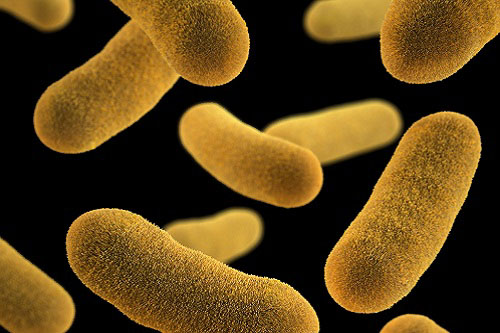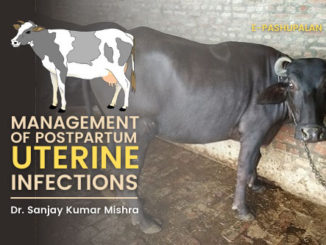This disease is also known as Enterocolitis, Pseudotuberculosis. It is a bacterial zoonotic disease. Yersinia is named after Alexandre Yersin, a French microbiologist. The infections caused by the members of genus Yersinia are collectively referred to as yersiniosis. It is a disease that usually affects intestinal tract. It is seen in cooler months of the year around Nov-January. Yersiniae are gram negative rods.
Etiology
Genus Yersinia includes 11 different species, of which 3 most important are Y.pestis, Y.enterocolitica, Y.pseudotuberculosis because of their pathogenicity for animals and humans. They belong to family enterobacteriaceae.
Y. pestis
It is known for causing plague. The primary reservoir for Y. pestis is rodents. Among the rodents black rat is one of the most important so the disease is also called Black death.
Route of transmission
- Transmission among rodents and other wild animals occurs via flea bites. Xenopsylla cheopis (oriental rat flea) and Pulex irritans (human flea) are the fleas mainly involved.
- Ingestion of infected rodents is a common method of transmission to domestic cats, and can also be a route of infection for humans.
- Humans can be infected by pestis directly through contact with blood, pus or aerosols from infected animals.
Infected humans develop plague symptoms that can be classified as
- Bubonic
- Septicemic
- Pneumonic
Bubonic plague
The incubation period ranges from 2 to 10 days with an acute onset of malaise, fever, chill and weakness. Bubonic plague is characterized by bubos (tender, swollen lymph nodes). Up to 24 hours later, one or more lymph nodes become swollen, forming a bubo. The buboes are extremely tender and painful, often developing in the groin and sometimes under the arms and on the neck. If untreated, bubonic plague may progress into septicemic form, spreading Y. pestis throughout the bloodstream to the rest of the body, including to the central nervous system where it can cause meningitis, and to the lungs, causing pneumonic plague. The mortality for bubonic plague is 13.5%.
Pneumonic plague
The incubation period is roughly 2 to 4 days for primary pneumonic plague. Pneumonic plague can also develop secondary to the other types of plague and occurs when Y. pestis infects the lungs. Once in the lungs, Y. pestis is contagious and can spread to others through respiratory droplets, causing primary pneumonic plague. The onset is acute, with a high fever, trouble breathing and cough, which may produce watery or bloody sputum. Patients may also have gastrointestinal symptoms. The resulting pneumonia progresses rapidly, resulting in death if untreated. The mortality rate for primary pneumonic plague is 57%.
Septicemic Plague
Primary septicemic plague is less common. Septicemic plague can be primary or develop after bubonic or pneumonic plague, and is characterized by the presence of bacteria in the blood. Primary or secondary septicemic plague can present with fever, chills, nausea, abdominal pain and vomiting. In advanced stages, patients can exhibit necrosis (tissue death) in the fingers, toes and nose, disseminated intravascular coagulation, (the formation of blood clots within the blood vessels), and purpura (purple blotches of skin caused by subcutaneous (under the skin) bleeding). Septicemic plague has a mortality 22% with treatment, and near 100% without treatment.
Bioweapon
Y. pestis is considered an effective bioweapon for the following reasons. It is readily available in the most parts of the world, can be contagious, and has a low infectious dose. It can be aerosolized (stable for 1 hour) to cause the contagious pneumonic form of plague, which has a high fatality rate.
Outbreaks
- In 1994, a total of 693 suspected bubonic or pneumonic plague cases were reported to WHO by Government of India. These cases were from Maharashtra, Gujarat, Karnataka, Madhya Pradesh, Uttar Pradesh and New Delhi. Positive laboratory test results for Yersinia pestis were reported by India. The outbreak of suspected plague lasted from August 26, 1994 to October 18, 1994.
- In the same year an outbreak occurred in Surat city on 21 September 1994 which resulted in 52 deaths.
- A small outbreak of primary pneumonic plague took place in the Shimla District of Himachal Pradesh State in northern India during February 2002. Sixteen cases of plague were reported with a case-fatality rate of 25%.
Y. enterocolitica
It is mainly found in feces of animals. Pigs are major source of infection.
Route of transmission
The disease is transmitted mainly through
- Ingestion of contaminated food, milk, water.
- Undercooked or raw pork is a common source of infection.
- Unpasteurized milk and dairy products can be a source.
- Infants can get if caregivers deal with raw meat and do not wash hands properly.

Symptoms in animals
They appear clinically healthy and remain as symptomless carriers. The disease is mainly manifested by septicemia with abscess formation in various organs. Mild diarrhea with blood or mucus. In cattle, sheep, goats and buffalos it causes enteritis, septicemia and placentitis which may further lead to abortion during last few weeks of pregnancy. In dogs, cats and pigs it causes enteritis.
Symptoms in man
Yersiniosis in people can range from an asymptomatic disease to septicemia and death. Adult patients seen to develop a less severe disease. It is characterized by fever accompanied by abdominal pain, cramps and diarrhea with blood or mucus. Vomition is seen in some cases. In severe cases the bacteria pass through intestinal wall and enter the blood stream, producing septicemia. In some cases disease spreads extra intestinal. Pharyngitis may also be seen.
Y. pseudotuberculosis
The most frequent hosts are pigs.
Route of transmission
- Ingestion of contaminated food or water
- Direct contact with infected animals
- Human to human transmission via dirty hands
Symptoms in animals
- Disease is severe in animals and most of the mammalian species show non specific signs as loss of condition, weight loss, gastrointestinal disturbances, ruffling of fur, posterior paralysis and coma.
- Infection in sheep is known as Bacterial hepatitis or Pyraemic hepatitis. Also In sheep placentitis and abortion occur.
- Infection in cattle is known as Flood scours or Mud scours or Swamp scours. Flood Mud Scours can cause a severe diarrhea and death in cattle. Cattle aged between 9 months and 4 years are most frequently affected. It is seen in cattle grazing wet, waterlogged or recently flooded pastures. In cattle and goats it causes mastitis.
- Hemorrhagic enteritis occurs in primates.
- In pigs it causes edema of eyelids.
Symptoms in man
It is characterized by fever, polyarthritis, and GIT disturbances. Pseudo appendicitis is common. In severe cases enlargement of liver, spleen and jaundice with fatality rate more than 50%.
Diagnosis
The disease can be diagnosed by
- Recent flea bite
- Person has been around rodents
- Suspected in food poisoning which occur following consumption of contaminated food particularly swine origin
Confirmatory tests can be done
- Direct microscopy
- Isolation of pathogen from blood, urine, feces, mesenteric lymph nodes.
- Serological tests such as ELISA can be done to detect antibody against the pathogens
- PCR can be performed for recognition of pathogenic bacteria in fecal samples.
Treatment
Y. pestis
Antibiotics, such as streptomycin and chloramphenicol, are highly effective for all plague presentations if begun early. If antibiotics are given within the first 24 hours after the symptoms of pneumonic plague develop, mortality is significantly reduced. Strict isolation procedures for all cases of plague for 48 hours are indicated after initiation of antibiotic treatment, since Y. pestis can spread from person to person by respiratory droplets.
Y. enterocolitica and Y. pseudotuberculosis
Not necessary unless severe septicemia develops. When disease is mild, antimicrobial therapy is not indicated. However systemic infection and extra intestinal cases should be treated with drugs such as gentamicin, chloramphenicol, tetracycline and streptomycin.
Prevention and Control
- Avoid consumption of raw or uncooked meat (pork) and thoroughly cook all meat products
- Avoid consumption of raw milk and drink only pasteurized milk
- Avoid contamination of feed and water by feces of rodents
- Prevent access of rodents to food supplies
- Wash hands after dealing with raw meat
- Wash all products before consuming
- Wash hands after dealing with animals
- Properly dispose animal feces
- Educating people about transmission and severity of disease
- Isolation of sick animals as well as sick humans
- Apply measures of rodent control
References
- A T Sherikar, V N Bachhil, D C Thapliyal. Textbook of elements of veterinary public health.
- Martin Shakespeare. Zoonoses. Second edition.
- Joann L Colville, David L Berryhill. Handbook of Zoonoses identification and prevention.
- Mahendra pal. Zoonoses
- Martin E. Hugh-Jones, William T.Hubbert, Harry V.Hagstad. Zoonoses recognition, control and prevention.
- Krauss, Albert Weber, Max Appel, B. Enders, Henry, H. Gerd, Alexander, H.Zahner. Zoonoses infectious diseases transmissible from animlas to humans. 3rd edition.
| The content of the articles are accurate and true to the best of the author’s knowledge. It is not meant to substitute for diagnosis, prognosis, treatment, prescription, or formal and individualized advice from a veterinary medical professional. Animals exhibiting signs and symptoms of distress should be seen by a veterinarian immediately. |







Be the first to comment